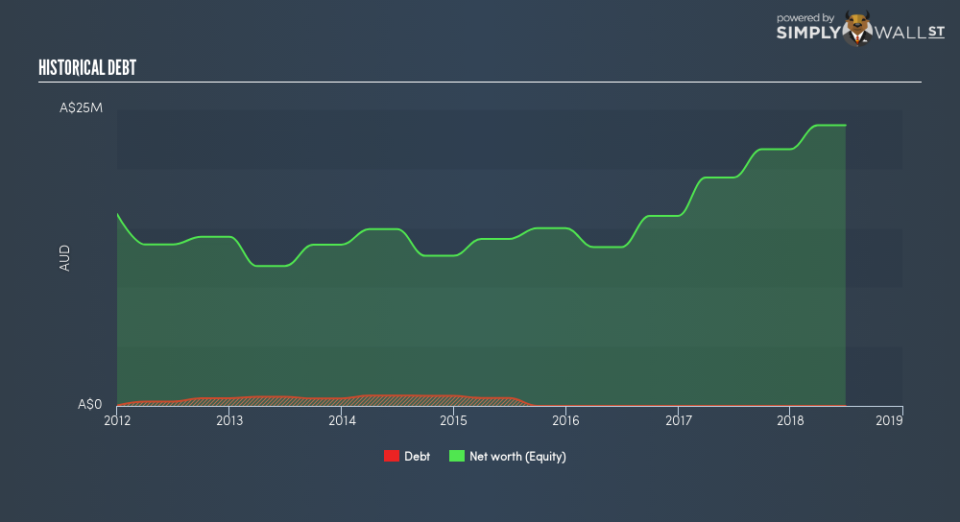Are Intermin Resources Ltd’s (ASX:IRC) Interest Costs Too High?

The direct benefit for Intermin Resources Ltd (ASX:IRC), which sports a zero-debt capital structure, to include debt in its capital structure is the reduced cost of capital. However, the trade-off is IRC will have to adhere to stricter debt covenants and have less financial flexibility. Zero-debt can alleviate some risk associated with the company meeting debt obligations, but this doesn’t automatically mean IRC has outstanding financial strength. I will go over a basic overview of the stock’s financial health, which I believe provides a ballpark estimate of their financial health status.
Check out our latest analysis for Intermin Resources
Does IRC’s growth rate justify its decision for financial flexibility over lower cost of capital?
There are well-known benefits of including debt in capital structure, primarily a lower cost of capital. But the downside of having debt in a company’s balance sheet is the debtholder’s higher claim on its assets in the case of liquidation, as well as stricter capital management requirements. The lack of debt on IRC’s balance sheet may be because it does not have access to cheap capital, or it may believe this trade-off is not worth it. Choosing financial flexibility over capital returns make sense if IRC is a high-growth company. IRC delivered a strikingly high triple-digit revenue growth over the past year, so it is acceptable that the company is opting for a zero-debt capital structure currently as it may need to raise debt to fuel expansion in the future.
Does IRC’s liquid assets cover its short-term commitments?
Since Intermin Resources doesn’t have any debt on its balance sheet, it doesn’t have any solvency issues, which is a term used to describe the company’s ability to meet its long-term obligations. But another important aspect of financial health is liquidity: the company’s ability to meet short-term obligations, including payments to suppliers and employees. At the current liabilities level of AU$2.5m, it seems that the business has been able to meet these commitments with a current assets level of AU$11m, leading to a 4.34x current account ratio. Having said that, many consider a ratio above 3x to be high, although this is not necessarily a bad thing.
Next Steps:
Having no debt on the books means IRC has more financial freedom to keep growing at its current fast rate. Since there is also no concerns around IRC’s liquidity needs, this may be its optimal capital structure for the time being. In the future, its financial position may be different. I admit this is a fairly basic analysis for IRC’s financial health. Other important fundamentals need to be considered alongside. I suggest you continue to research Intermin Resources to get a better picture of the stock by looking at:
Valuation: What is IRC worth today? Is the stock undervalued, even when its growth outlook is factored into its intrinsic value? The intrinsic value infographic in our free research report helps visualize whether IRC is currently mispriced by the market.
Historical Performance: What has IRC’s returns been like over the past? Go into more detail in the past track record analysis and take a look at the free visual representations of our analysis for more clarity.
Other High-Performing Stocks: Are there other stocks that provide better prospects with proven track records? Explore our free list of these great stocks here.
To help readers see past the short term volatility of the financial market, we aim to bring you a long-term focused research analysis purely driven by fundamental data. Note that our analysis does not factor in the latest price-sensitive company announcements.
The author is an independent contributor and at the time of publication had no position in the stocks mentioned. For errors that warrant correction please contact the editor at editorial-team@simplywallst.com.

 Yahoo Finance
Yahoo Finance 
